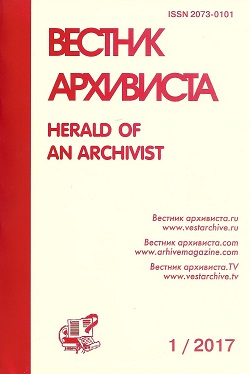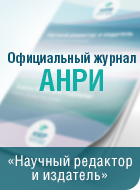Revisiting the Scope of Collaboration in the Days of the Great Patriotic War: A Case-Study of the Smolensk Region



УДК 94(47)«1941/1945»
DOI 10.28995/2073-0101-2018-3-856-866
Dmitriy E. Komarov
K. G. Razumovski Moscow State University of Technologies and Management (Vyazma branch), Vyazma, Russian Federation
Revisiting the Scope of Collaboration in the Days of the Great Patriotic War: A Case-Study of the Smolensk Region
Abstract
The article assesses the scope of collaboration in occupied Soviet territories in the days of the Great Patriotic War. This topic is a matter of intense debate in modern Russian scholarship. The most controversial issue is the extent to which Soviet citizens participated in events organized by invaders in occupied territories and the support which local population lent to occupation authorities. The article assesses potential threat of collaborationism in political, as well as economic terms. Having seized the richest and most economically developed regions of the country, the enemy could have significantly strengthened his military potential. National historiography has not yet integrated all data on stratification of local population in their stance toward invaders. It is an extremely difficult task to accomplish nationwide. As occupied territories were culturally, historically and socio-politically heterogeneous, it should be approached by studying republics and regions on a standalone basis. The case-study of the Smolensk region draws on archival materials to determine the share of Soviet citizens cooperating with occupation authorities within the framework of ‘administrative collaboration.’ It concludes that the number of Smolensk families whose members can be classified as ‘administrative collaborators,’ did not exceed 12%, whereas more than 9% of Smolensk families had members who took an active part in the struggle against invaders in the partisan detachments. Thus, the article demonstrates that two extreme irreconcilable phenomena in the occupied territories — collaborationism and partisans movement — were practically in balance. The absolute majority of Smolensk residents (almost 80%) did their utmost to avoid participation in both. Further developments in the Smolensk region proved that their ‘neutrality’ was conditional: the population remained loyal to the Soviet government and formed a social base for large-scale resistance to the occupation policy. Smolensk region became one of the centers of the partisan movement. To a certain extent, Smolensk data can be extrapolated to other western regions of the Russian non-black earth area.
Download the article: komarov_doi
Keywords
Sources, Great Patriotic War, Smolensk region, collaboration, occupation regime, partisans, archival document.
References
ERMOLOV, I. Tri goda bez Stalina. Okkupatsiya: sovetskie grazhdane mezhdu natsistami i bol’shevikami. 1941–1944 [Three years without Stalin: Occupation: Soviet citizens between Nazis and Bolsheviks: 1941–1944. In Russ.]. Moscow, Tsentpoligraf publ., 2010, 383 p.
KOVALEV, B. N. Natsistskaya okkupatsiya I kollaboratsionizm v Rossii. 1941– 1944 gg. [Nazi occupation and collaboration in Russia: 1941–1944. In Russ.]. Moscow, Tranzitkniga publ., 2004, 544 p.
KOZHURIN, V. S. O chislennosti naseleniya SSSR nakanune Velikoi Otechestvennoi voiny [On the population of the USSR on the eve of the Great Patriotic War. In Russ.]. IN: Voenno-istoricheskii zhurnal, 1991, no. 2, pp. 21-26.
KOMAROV, D. E. Smolenskaya oblast' v ogne Velikoi Otechestvennoi: narod, voina, pobeda [Smolensk oblast in the fire of the Great Patriotic War: People, war, victory. In Russ.]. Smolensk, Svitok publ., 2015, 368 p.
Narodnoe khozyaistvo SSSR v Velikoi Otechestvennoi voine. 1941-1945 gg. Statisticheskii sbornik [National economy of the USSR in the Great Patriotic war, 1941-1945: A statistical compendium. In Russ.]. Moscow, Informatsionno-izdatel'skii tsentr Goskomstata SSSR publ., 1990, 235 p.
SEMIRYAGA, M. I. Kollaboratsionizm. Priroda, tipologiya I proyavleniya v gody Vtoroi mirovoi voiny. [Collaboration: Nature, typology and manifestations in World War II. In Russ.]. Moscow, ROSSPEN publ., 2000, 863 p.
About author
Komarov Dmitriy Evgenievich, PhD in History, associate professor, K. G. Razumovski Moscow State University of Technologies and Management (Vyazma branch), assistant professor, Vyazma, Russian Federation, +7-910-780-17-80, This e-mail address is being protected from spambots. You need JavaScript enabled to view it
Submitted 19.01.2018, published:
KOMAROV, D. E. K voprosu o masshtabakh kollaboratsionizma v gody Velikoi Otechestvennoi voiny 1941-1945 gg. Na materialakh Smolenskoi oblasti [Revisiting the Scope of Collaboration in the Days of the Great Patriotic War: A Case-Study of the Smolensk Region. In Russ.]. IN: Vestnik arhivista / Herald of an Archivist, 2018, no. 3, pp. 856-866. doi 10.28995/2073-0101-2018-3-856-866











